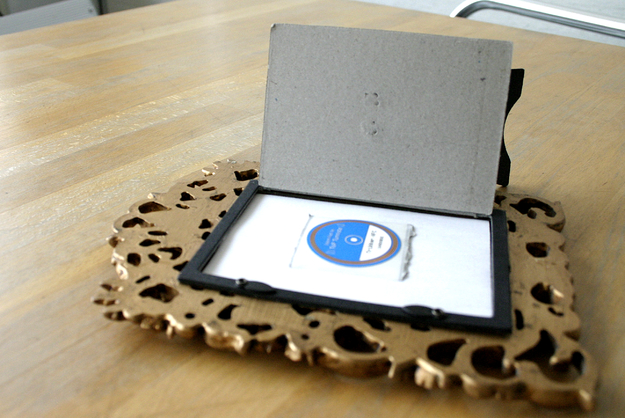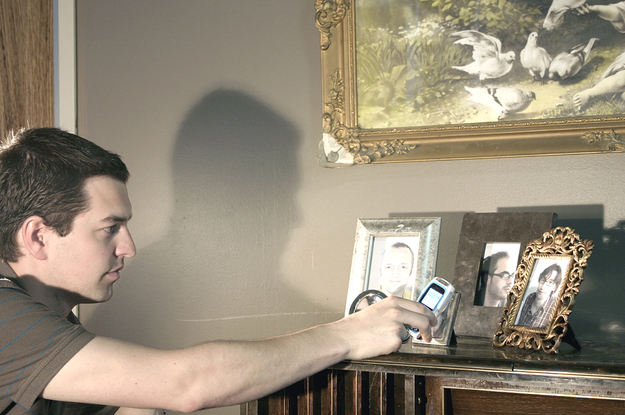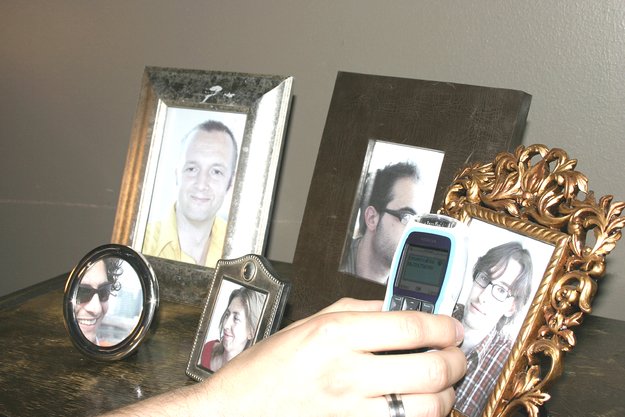Questions that come up: What are useful things to have online? How can the sharing of information between things yield us new valuable meanings and experiences? What new kinds of play can we think of, when our ordinary stuff begins to talk among itself? Will objects gain personalities?
And the key question seems to be: What are valid and imporant kinds of human agency that should be designed into an Internet of Things?
The participants of this workshop will develop scenarios for an internet of things. Ideas can range from scripts for small new rituals to outlines of societal changes of epic scale. The critical, utopian or nightmarish scenarios will be informed by lectures with concrete knowledge about currently available technology; by handy workshop tools that give hands-on experience in developing RFID applications, and by insightful presentations by cutting-edge makers and thinkers.
Speakers
Régine Debatty is the writer of the blog we-make-money-not-art.com. Her blog elaborates on artists, hackers and interaction designers who endeavour new technologies like RFID. In her talk she will give a broad overview of current artistic and cultural applications of RFID.
Matthew Karau (former researcher at MIT MediaLab) has been working on numerous RFID related projects. He will give technical introductions on what RFID is and what it is or is not capable of, and will support the participants in developing their projects.
Heiko Hansen is artist and one half of the duo HeHe, that makes beautiful projects in which the technological systems that surround us are 'reverse engineered', and put to new critical usage and social functions. Using examples from HeHe's work, Heiko will go into agency in relation to ubiqitous computing and physical interfaces.
Matthijs Kouw studies Science Dynamics at the University of Amsterdam and will present his research into the issue of making sense of the enormous reservoirs of new kinds of data that are generated by the wide implementation of RFID.
Malcom McCullough, is Associate Professor of Architecture and Design, University of Michigan, and author of Digital Ground. Malcolm will talk about designing for human agency in a situation where (digital) interactivity has become ambient, and will discuss his theory of 'place' for interaction design.
Rob van Kranenburg is senior lecturer Ambient Experience Design (HKU, KMT) and program manager at the Virtueel Platform. He is a longtime critical follower of the developments around ubiquitous computing and RFID. Rob will explore which attitude is necessary towards the next (expected) big issue around RFID: electromagnetic pollution, or EMF.
Trajectory
The workshop takes 3 days. The morning sessions are dedicated to lectures and presentations on technology, theory and interesting implementations of RFID.
The afternoons are dedicated to development of participants projects.
On the first day, participants will draw the outlines of their workshop projects, that will be developend and refined on the second and third day.
To test some practical aspects of their projects, participants can use the workshop tool consisting of RFID tags, readers and an online database. Experienced staff will be present for technical assistance. The workshop will be concluded with an informal presentation of all concepts developed during the workshop.
Reader
The reader for this workshop is online. Come back for frequent updates.
Workshop Report
An interesting workshop about RFID and it's use, we will also had a look at the Internet of Things and how this evolves.
Day 1
The workshop kicked off with a lecture by Régine Debatty, writer of the well-known blog for art and technology we-make-money-not-art. She presented a dazzling overview of the growing number of projects using RFID technology. Project examples from Japan and Korea, where giant leaps in RFID developments are made, which are partly due to lack of regulations and privacy concerns. For instance the project of New Songdo City, the futuristic, massively scaled ubiquitous computed Korean ‘U-City’ triggered discussion on RFID as privacy-invading technology. Debatty expresses her feeling of privacy as ‘a lost battle’. Klaas Kuitenbrouwer added that combining collectivity with privacy means that protection of privacy should be upheld on other levels - the question here is not about privacy, but about agency.
Matthew Karau, former researcher at MIT MediaLab, now freelance teacher, gave an introduction to the technical basics and facts as well as the limitations and benefits of RFID technology. Corporations are pushing the global standardization of Electronic Product Code (EPC) as well as RFID development to simplify and optimize their supply and distribution strategies. In developing RFID there’s a tendency of thinking it’s such an obscure technology, nobody will try to crack it. Being a controversial technology, RFID concerns mostly center on data security and privacy, proximity and costs as well as environmental issues.
Finale of the lectures on the first day, was a screening of a video on RFID and the Internet of Things by novelist Bruce Sterling at the 2004 Ars Electronica. Sterling, who was working on his essay Shaping Things at that time, emphasized the ‘need to determine the life cycles of objects’. He concludes quoting William Gibson’s great maxim: ‘The future is here, it’s just not well distributed yet.’
Day 2
Artist Heiko Hansen gave an overview of the work of HeHe.org (the artist duo he forms with Helen Evans). HeHe.org has a do-it-yourself approach to technology and builds installations that work with measurements of distance, sound pollution, energy consumption or changes in the electromagnetic field. HeHe.org works with ‘reverse engineering’ and many of its art projects are concerned with gesture and electricity. For Hansen, the power of using RFID in projects is that RFID makes things personal, it links multiple objects, and can trigger gesture-based interaction.
Next was a lecture by Matthijs Kouw, who studies Science Dynamics at the University of Amsterdam. His concern was how to make sense of data related to tagged objects in an increasingly ubiquitous tech society? Since the motive for tagging is making flows of objects measurable, information should have reliability. Kouw elaborated on the backgrounds of data framing, social constructivism and differences between analytic and diagnostic history. His future research will include the semiotic question of visualizing flows of traffic in diagrams and making these flows ‘predictable’. Kouw points out that we are no longer capable of explaining, but need to experiment.
Finally Rob van Kranenburg, senior lecturer Ambient Experience Design, explored the environmental issues of electromagnetic pollution. Is radiofrequency-pollution a hype or paranoia? Van Kranenburg proposed an attitude that doesn’t say ‘we can’t have it’, but ‘it’s there, so how to deal with it?’ Although groups like CASPIAN take an ultimate anti-RFID position to such a limit that they sign off - we do need people like Katherine Albrecht in this discourse on emerging connective technologies.
Day 3
The third day provided a thought-provoking lecture by Malcolm McCullough, associate professor of Architecture and Design of the University of Michigan, on designing for human agency in a situation where interactivity has become ambient. Using the spread of electricity in the beginning of the century as metaphor for the current developments in ubiquitous computing, McCullough discussed how technological modernity transformed cultural experience throughout the 20th century and changed aesthetics on the way. What industrial design was for the 20th century, will be interactive design in our 21th century, and here McCullough made a strong case for situated design, as contrasted by design for anytime or anyplace.
In the afternoons the participants digested all this through intense discussion and through the development of prototype projects and scenario's. Three projects were presented at the end of day three, using different workshop tools. One group analysed and realised one application of the Nokia3220 RFID enabled phone. They tagged portrait pictures with RFID tags, and wrote the phone numbers of those portraied onto the tags. This enabled a person using a Nokia3220 to call the person in the picture by just keeping the phone close to the photo.
A second group of participants used Mediamatic's Symbolic Table to illustrate a scenario in which Lonely Planet travell guides were tagged, and youth hostels around the world had a small RFID reader in the lobby. This little infrastructure was then to be integrated with Flickr, del.icio.us, and youTube. The possible implications of this simple and not too improbable proposition are hard to summarize, but ranged from always entirely up to date travel guides, to highly personalized traveling tips: 'the Long Tail of Tourism' and worldwide subcultures among young travelers. The last group worked out another tourism related idea, and developed a simple way in which generic souvenirs like Dutch China Wind Mills (if you went to Holland) can be personalized by tagging them and attaching your uploaded travel pictures, and video's to the tag. The whole collection of material would be online, so giving the souvenir to somebody else would be giving them access to all the travel stories.



